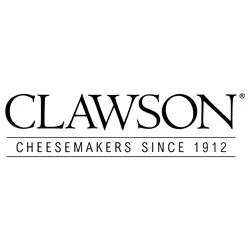Self Study Member Course
Studying for your certification via the self study eLearning platform allows you to study at your own pace, at a time that suits you. You can study with us from wherever you are in the world before taking the online exam and becoming a certified Academy of Cheese Member.
When you enrol you’ll receive instant access to:
- Level Two online Learning Road, consider this your digital course book
- Knowledge check questions to test your progress as you study
- Digital downloadable delegate pack (printed version available to purchase)
- Downloadable Tasting sheets
- Level Two Exam
- Cheese Library containing over 150 cheeses
The Self Study course does not include cheese but we encourage delegates to taste as many of the 75 cheeses as possible whilst studying the course.
You have 12 months access to the Learning Road and to take the exam. Upon passing the exam you will receive a pin badge and certificate suitable for framing.


















6 reviews for Member certification Self Study
Lindsay Schwarz –
I thoroughly enjoyed my Level 2 self study course. After being successful in Level 1, I wanted to learn even more and was aware of the great materials the Academy presented to self study learners. The quality, once again, was unparalleled.
I would recommend this course to anyone that was successful in their Level 1 course and is hungry for more. That being said, students need to understand that this course is much more time consuming than Level 1. That was something I was unprepared for, but in the end it was all worth it!
I learned a lot, ate some great cheese, and felt confident going into the exam.
Geoff Quantock –
Really useful to do a classroom course at No2 Pound Street. The cheese tasting and making worked very well in a group and to get the input from James Grant added a depth to the information that you may not get if doing a self study course. There was a lot to take in, and i felt at the time it was a bit rushed, however the online material provided an excellent reference for the items covered live, which could then be revisited at your own pace
Jacquie Radford –
As a cheese enthusiast, I highly recommend this course to deepen understanding of cheese and the some of the science behind it. I thoroughly enjoyed the exploring (and tasting) more of the universe of cheeses – and gained some more favourites along the way. The cheese library and learning road are well put together and immensely helpful in developing a base of knowledge.
So if you enjoy cheese and learning, and would like to know more, I would recommend the course. It is a significant commitment, but self study (and a year to complete the course) means you have the flexibly to fit it in with other commitments and a busy life.
Emanuele Armaforte –
This was a fantastic course, which described comprehensively all the important topics related to cheese making while also providing good focus on the tasting of different cheese and explaining professional ways to assess cheese from an organoleptic point of view and record scores. The level 2 course provides a really good balance between online resources and face to face training sessions. The training was delivered by Patrick and Tracey and their knowledge, skills and expertise played a crucial part in making this a very informative and enjoyable course. Highly recommended!
Claire Lewis –
As someone who is not in the Cheese Industry, I was a little concerned before I started the course whether it would be a course for me. I need not have worried! I would wholeheartedly recommend Level Two to someone who is simply a cheese enthusiast like myself. The course is totally fascinating with a well-balanced in-depth look at cheese from various angles such as the history, science and the Makes plus expanding your own appreciation of the complex flavours of a wide range of cheeses. The facility to learn online from a Tutor such as Charlie with his vast experience and excellent and thoroughly enjoyable presentation style plus the Online Modules is very good indeed.
So, if you are just into cheese and want to learn more for your own pleasure and interest then do go for Level Two!!
Alicia Wright –
I studied Level 2 during lockdown, this course is fully in depth and there is so much detail within the course it really helped me grow within my job but also my knowledge of cheese as-well as the more scientific aspects of the whole cheese making process. I really enjoyed going in to the detail with the tasting module its really helped elevate my experiences when tasting cheeses. I fully recommend this course even with level 2 self study is possible and it was helpful for me to keep taking time to focus on certain modules and keep going back to certain modules and studying the cheese library which i have used since to design cheese boards. Its basically a great course with lots of help and support along the way.